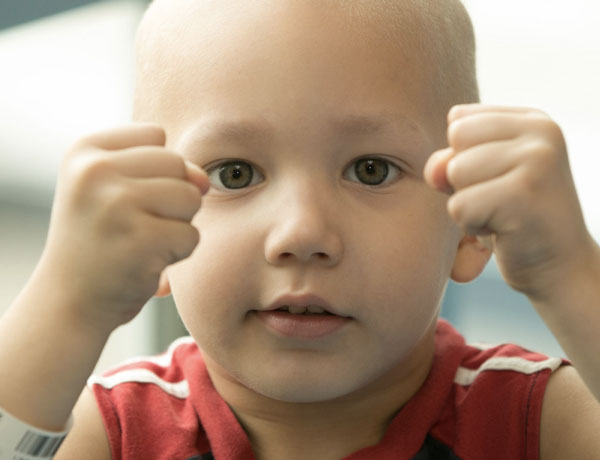Leave a Comment:
1 comment
[…] Pediatric Acute Lymphoblastic Leukemia-Increased 5-yr Survival but Lifetime of Pain […]
Reply
Learn about conventional, complementary, and integrative therapies.
Dealing with treatment side effects? Learn about evidence-based therapies to alleviate your symptoms.
Click the orange button to the right to learn more.

According to Sir Isaac Newton, “For every action, there is always an equal and opposite reaction.“ This law of physics applies to the dramatic improvement in five-year survival rates for pediatric acute lymphoblastic leukemia aka ALL. First and foremost, I want to establish that pediatric and AYA cancer survivors can enjoy much, much higher rates of remission today than they did say…30 years ago.
I am a parent. If my child, god forbid, was diagnosed with ALL, more than anything, I would want Alex to achieve complete, long-term remission from his cancer.
At the same time, I would use my own cancer survival to benefit Alex’s own cancer survival. Meaning, I have lived with the threat of late-stage and long-term side effects since 1999. And I have avoided numerous side effects in that time.
And survivors of pediatric and AYA cancers can live my own form of evidence-based non-toxic therapies all designed to reduce and eliminate late and long-term side effects.
I am simply saying that studies show that toxic therapies such as bone marrow transplantations cause long-term and late-stage side effects. Side effects that I have been able to avoid and/or heal.
Were you diagnosed with a pediatric or AYA blood cancer? What therapies did you undergo? Please scroll down the page, post a question and I will reply ASAP.
Thank you,
David Emerson
“What happens after a cancer diagnosis?
That’s the question investigated by a study published by the CONCORD program on cancer survival published on Tuesday in The Lancet. The study looks at patient records for adults and children diagnosed with a variety of cancers in 71 countries. The records are from 2010 to 2014. The goal is to compare five-year survival rates, a number used to assess the effectiveness of treatment.
The overall message is that there is an improvement in cancer survival rates but with a caveat. As lead author, Dr. Claudia Allemani notes, “That is particularly true in developed countries and less so in developing countries…”
Case in point: Childhood cancers in upper–income countries — like the U.S. and much of Europe — is treated so successfully that the five-year survival rate often reaches 90 percent or even higher. That was reflected in the data for acute lymphoblastic leukemia, the most common childhood cancer. By contrast, in some middle-income countries — China, Mexico, and Brazil, for example — it’s less than 60 percent…
Today, largely because of chemotherapy as well as some other treatments, like stem cell transplants, survival rates have soared in the West…
Methotrexate exposure impacts cognitive processes cancer survivors need to multitask
“Investigators also reported that brain imaging showed that higher blood levels of methotrexate during treatment for acute lymphoblastic leukemia (ALL) were associated with anatomical and functional changes in regions of the brain involved with mental flexibility, planning, reasoning and other skills related to executive functioning…
“This study is the first to show a clear dose-response effect between methotrexate concentrations in the blood during treatment and executive functioning in survivors…
Higher concentrations of methotrexate and homocysteine were associated with lower scores on measures of executive function, including mental flexibility, verbal fluency, working memory and processing speed…
More Promise With Immunotherapy in Pediatric Leukemia
“The immunotherapy, known as anti-CD19 chimeric antigen receptor (CAR) T-cell therapy, puts a patient’s own immune cells through a laboratory process that results in the number of T-cells being greatly expanded, “fully activated,” and then reinfused, explained Daniel W. Lee, MD, from the Pediatric Oncology Branch of the National Cancer Institute…
In a phase 1 trial, the experimental therapy demonstrated antileukemia activity in 3 of 3 children with acute lymphocytic leukemia (ALL)…”
“Scientists at Griffith University’s Institute for Glycomics and The Saban Research Institute of Children’s Hospital Los Angeles have discovered a critical weakness in leukaemic cells, which may pave the way to new treatments.
The research team has demonstrated that leukaemic cells can be eradicated by removing a carbohydrate modification displayed on the cell’s surface.
Director of Griffith University’s Institute for Glycomics, Professor Mark von Itzstein is the Australian team leader. He said the discovery is an important advance against leukemia, a cancer of malignant white blood cells that multiply uncontrollably. Acute lymphoblastic leukemia (ALL) is the most common childhood cancer.
“We have found that the leukaemic cell has an altered cell surface carbohydrate decoration compared to normal cells and this also conveys resistance to drug treatment,” Professor von Itzstein said.
“We have now shown that with the removal of this carbohydrate alteration the cells die…”
Professor von Itzstein said the research could lead to new ways to fight the disease, particularly where it has become treatment resistant.
“Up until 40 years ago, only one child in five survived ALL,” but advances in chemotherapy have changed that outcome and now nearly 80 percent of children with ALL will be cured,” Professor von Itzstein said.
“For the remaining 20 percent, however, the disease returns necessitating additional rounds of intensive chemotherapy. Unfortunately, most relapsed patients die within one year because their cancer cells are resistant to chemotherapy.
“In the future, we hope that this novel, structural approach to treating ALL may offer an effective treatment option for children battling drug-resistant forms of the disease…”
“By exploiting this ‘Achilles heel’ in these leukaemic cells, our collaborative research efforts are now focused on the development of a new type of drug therapy that targets this carbohydrate modification.”
[…] Pediatric Acute Lymphoblastic Leukemia-Increased 5-yr Survival but Lifetime of Pain […]
Reply